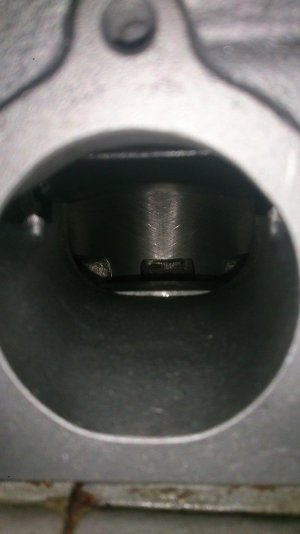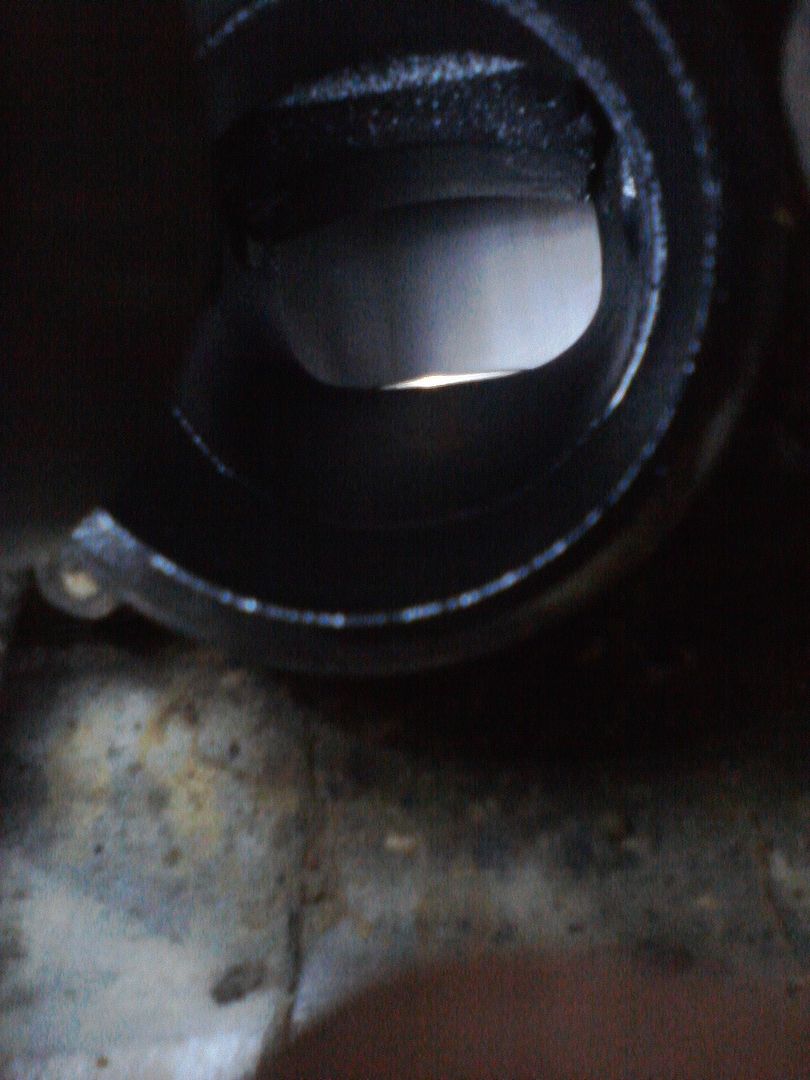Dude. Sorry. Just trying to help. You've had a year. I've had a few posts in this thread. I may be redundant, but maybe it doesn't hurt to replay everything.
We have are three elements at play:
a. engine dynamics (i.e., power valve position) (affecting compression)
b. air-fuel mixture/volume (carburetor/air leaks/reeds/etc.)
c. ignition timing. (spark)
1. You can check the power valve when it is running. Take off the right side cover, and start your bike. You can mark where the PV Lever is at rest (white paint). Go ride the bike, and see if it returns where it should. This takes the PV out of the equation if it returns properly. See if it ends up in a different spot between blipping the thottle and going for a ride.
You could also disconnect the power valve, and secure it in the down position, then ride it (but not too hard). See if that fixes it. IF you take the PV out of the equation, do you eliminate the problem?
2. Carburetor: How do you know that the slide returns exactly where it rests every time?
I might not have made this clear as far as the idle. If the bike is sitting there idling you can rev it up or do anything you want, it generally goes back to whatever the idle was. If you ride it down the trail for a second and stop it may idle OK, it may idle high, it may idle low. Same deal on starting, it may be OK, high or low.
Why would riding it make a difference? Is something moving/not returning/being jarred up/down? What differentiates moving and not moving? When you're riding, you're holding the throttle open longer, and flowing more air than compared to at rest. Could something be wrong?
Could riding it move the power valve/keep it from returning? Test 1 above will help you answer that question.
If you don't keep asking questions, you won't get the right answer.
3. Have you stuck a timing light on this thing to see if the ignition timing is consistent? Could it be that the timing is jumping around? A light on the rotor may indicate a variance in ignition timing which could affect the idle speed.
You talked about connections, but no one has stuck a timing light on this (as far as i know). That might identify something, OR eliminate a possibility. If you can narrow your problem/solution space, you're making progress.
Stick the light on it, or maybe swap ignitions (rotor, stator, and CDI) with the known good bike. If you don't have access, i could send you mine from my 2002 300.
The fact that this is so variable has me doubting that it is low compression. Low compression usually manifests itself in an inability to idle at all. Variable compression would explain something. Variable compression could be attributed to the power valve.
An air leak is pretty easy to track down. You can build your own rig for $30, and then pressurize the system and see where it leads. Having just tracked down a porosity problem myself, it isn't unheard of. You will have to build a pressurization rig, but that's pretty easy.
If it matters, i've been working on motorcycles for 36 years, (4 as a mechanic in a shop), and i have three degrees in engineering. If i've learned anything through all of this, it is to ask a lot of questions. if you close your mind to a possible solution without data to substantiate the closure, you'll never find the problem. Sometimes you have to cover things a few times before you get the answer.
Good luck. Sorry if I annoyed you.
blitz.


